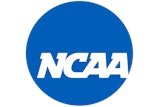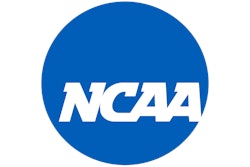As this is written, civic and political leaders in St. Louis are - not to put too fine a point on it - freaking out. Up against a Feb. 1 deadline, city officials are attempting to draft a plan for making improvements to the Edward Jones Dome in an attempt to prevent their NFL tenant, the St. Louis Rams, from leaving the city at the end of the 2014 season. The team's lease with the city, which was crafted and agreed to in late 1994, gives the team the right to break its 30-year lease 10 years early if the stadium isn't a "first-tier" football stadium, defined - necessarily hazily, since the lease doesn't specify - by different spokespeople and newspaper columnists as being among the top eight venues in the NFL in terms of quality.
Wait - what?
You heard me. And the sound you're hearing now is the sound of many millions of chickens coming home to roost.
Flip the calendar back to 1994. The Los Angeles Rams, by that time a third-tier professional sports franchise, were 15 years removed from the last civically funded upgrade of its home field, Anaheim Stadium. The team was $30 million in debt, and then-owner Georgia Frontiere was openly shopping the team to bidders in several cities that had previously hosted NFL franchises.
The Gateway to the West's successful bid, accepted by a cackling Frontiere - this is not hyperbole - in late 1994, took the breath away from pretty much every person who saw fit to comment on it, and it spurred an investigation by the league, which didn't fancy losing its number-two television market to a bunch of Midwesterners showering a league owner with cash (instead of the league itself). St. Louis bested Baltimore and a group from Anaheim called Save the Rams by giving the team the brand-new $260 million Dome (deemed the "most spectacular stadium on the planet Earth" by St. Louis County executive Buzz Westfall), revenue from 100 luxury boxes and 6,000 club seats, a $15 million practice facility on a site to be selected by the team, $30 million so the team could retire its debt and $15 million to cover its relocation fees. With an annual lease payment of $250,000, the Rams were looking at $20 million in annual profits, assuming that the citizenry got behind the team and purchased season tickets. The city, county and state guaranteed profits at that level, in fact, as well as sales of at least 85 percent of the stadium's skyboxes and club-level seats for the next 15 years. Bob Bedell, president of the St. Louis Visitors and Convention Commission, called it "about the most lucrative deal in sports history." More famously, St. Louis city comptroller Virvus Jones told reporters, "This city has rouge on its cheeks and we're showing a hell of a lot more than leg. There is no leverage. When you come right down to it, there's no such thing as getting half raped."
This didn't seem to concern the people of St. Louis. Local boosters had estimated that the team would need to sell 40,000 permanent seat licenses, and in early February 1995, three weeks after the official announcement of the deal, the team had received more than 72,000 applications containing deposit checks. Several watchdog groups, less than enthralled, noted that the stadium's $260 million cost, borne by the state of Missouri (half), the city and St. Louis County (one quarter each), would in fact cost taxpayers $720 million by the time the debt was retired in 2025. The three entities together pay $24 million per year to pay off the revenue bonds.
City officials, meanwhile, crowed. "The St. Louis Rams - how sweet it is," St. Louis mayor Freeman Bosley told the media on the day of the official announcement. And, forgetting his city had lost its longtime NFL team to Glendale, Ariz., just seven years before, he added, "Today is the day that the dream of a team of our own is now a reality."
A team of our own - if only that were the case. The Rams aren't the publicly owned Green Bay Packers, and so the threat of the team's departure is very real. The possibility that a group in Southern California might poach the team that Missouri politicians poached from Southern California not even a generation ago, while Missourians continue to pay for a 20-year-old stadium that continues to be lucrative for the team's owners, just adds another layer of irony to the team's recent history. (See "Rams Win Super Bowl Five Years After Move," 2000, and "Rams Waive 'First-Tier' Clause in Exchange for $30 Million in City-Funded Stadium Improvements," 2007.)
Wait - what?
You heard right. The original terms of the lease were that the Rams would stay in town until 2025 assuming that the team deemed the stadium to be "first-tier" in the 10th and 20th years of the lease. Negotiations on the first hurdle stretched well past the first deadline, but in 2007, St. Louis agreed to pay $30 million in stadium upgrades to prevent the team from exercising its escape-clause option. The city paid for new ad panels, scoreboards and LED video boards, a new Premium Club and openings in the seating bowl to allow views to the field from the existing Rams Club, a repainting of the Dome's interior and installation of credit card readers at concession stands, all the while knowing that the team could then exercise the same escape-clause option a few years later (the improvements were only completed prior to the 2009 season).
If all the terms of the lease were known outside of the mayor's inner circle, you'd have a hard time finding evidence of it. Sifting through the Lexis-Nexis database of newspaper reports yields the first mentions of the "first-tier" clause around 2007 - two years after the Rams' lease turned 10 years old - with references to the phrase doubling in the past three months. This isn't surprising when you see how the various players tiptoe around the subject when reporters are holding a microphone. In January, the St. Louis Post Dispatch offered one of the few blow-by-blow reports centering on the "first-tier" negotiations to ever be committed to ink. The St. Louis Convention and Visitors Commission, which manages the Dome, held its meetings with officials from St. Louis and St. Louis County behind closed doors; both the county executive's office and mayor's office refused comment, with the chief of staff to St. Louis mayor Francis Slay, by way of referring all questions to the CVC, saying, "We've all agreed to speak with one voice." That one voice, the paper reported, CVC president Kathleen Ratcliffe, "would not discuss the proposal or the process under way to develop it."
Should the CVC's plan for stadium improvements fail to sufficiently impress the Rams, the team will have until May 1 to present a plan of its own, with arbitration beginning June 15 - not to choose one plan or another, forcing the city and county to fund improvements, but to determine whether either plan would make the Dome a "first-tier" stadium. Absent a deal, the Rams will be free to relocate on March 1, 2015.
There is evidence that, along the way, certain St. Louis luminaries have recognized that it's the region's elected officials who, more than once, have been responsible for putting themselves in this sort of predicament. Three-term U.S. Sen. Thomas Eagleton, one of the biggest boosters of the plan to attract the Rams in the mid-'90s - who according to legend almost scuttled the deal when he described St. Louis to L.A. Rams general manager John Shaw as "sort of like a raucous Des Moines" - was asked at the time to consider the eventual $720 million stadium price tag against the cost of stadium improvements that had long been demanded by St. Louis Cardinals owner Bill Bidwill before he transplanted his team in the Arizona desert. Would it not have cost the citizens of St. Louis less to have simply appeased Bidwill and kept the Cardinals from uprooting?
"There's a lesson there," Eagleton said.




































